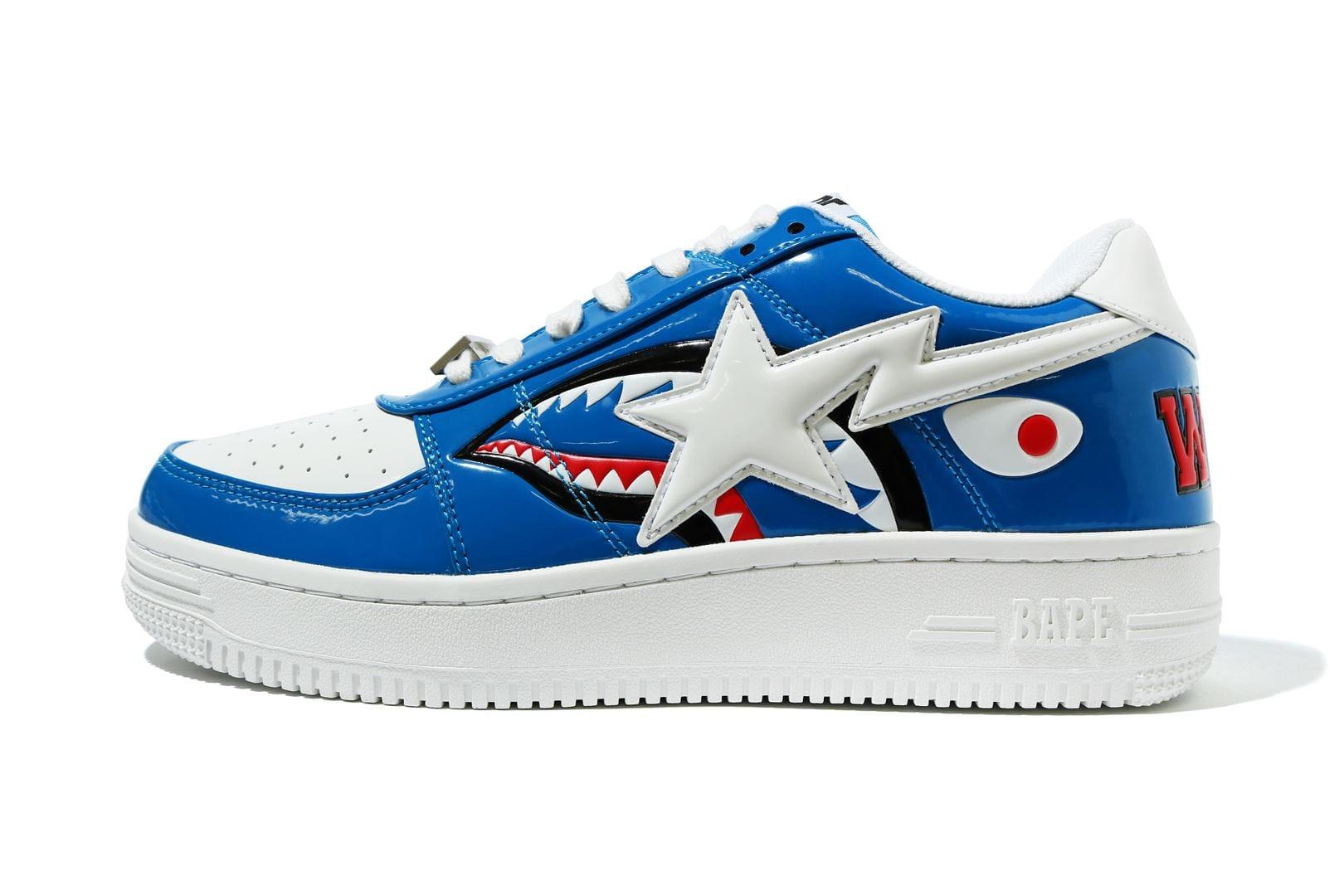BAPESTA is not just a sneaker; it is a cultural artifact. Born out of Japan’s legendary streetwear brand A Bathing Ape (BAPE), the BAPESTA quickly became a symbol of bold fashion and urban self-expression. Designed by Nigo, the founder of BAPE, the sneaker made its debut in the early 2000s and took inspiration from one of Nike’s most iconic silhouettes—the Air Force 1. However, BAPESTA was not a mere copy. With its signature lightning bolt design replacing the Swoosh and an array of glossy patent leather colorways, it redefined how sneakers could be both a fashion statement and a collector’s item.
Why BAPESTA Became a Streetwear Status Symbol
The allure of BAPESTA lies in its exclusivity and its fearless approach to design. In a time when most sneakers were muted in tone and safe in execution, BAPESTA burst onto the scene with vibrant, mismatched colors and high-shine finishes. The design felt like a rebellion against the norms, a perfect match for the hip-hop culture that embraced it. Rappers like Pharrell Williams, Kanye West, and Lil Wayne were among the early adopters, pushing the BAPESTA into the global spotlight. It wasn’t just about footwear—it was about being part of a movement that championed individuality, luxury, and attitude.
BAPESTA vs Air Force 1: More Than Just Aesthetic Twins
The comparisons between the BAPESTA and Nike’s Air Force 1 are inevitable. Their shape, silhouette, and midsole designs are strikingly similar. However, BAPESTA’s evolution shows that it’s more than a clone. The lightning bolt logo, often paired with vivid prints and wild materials, gives it a distinct identity. While the Air Force 1 symbolizes mainstream appeal, the BAPESTA represents subculture authenticity. It carved its own lane by embracing Japanese streetwear aesthetics, limited releases, and high-profile collaborations that targeted fashion-forward youth rather than the general public.
Collaborations That Cemented BAPESTA's Legacy
A major factor in BAPESTA’s legendary status has been its groundbreaking collaborations. Nigo’s genius lay in blending fashion with music, art, and pop culture. The BAPESTA has been reimagined with pop icons like Marvel, DC, and even artists such as Kanye West, whose “College Dropout” BAPESTA became an ultra-rare collector’s gem. These partnerships gave the sneaker new life and relevance in different eras. Each release told a story and connected with fans who valued both the aesthetic and the cultural meaning behind the design.
The Role of Nigo in BAPESTA’s Global Success
Nigo is often credited as a visionary who changed how the world viewed streetwear. His role in designing and promoting the BAPESTA cannot be overstated. By strategically placing the sneaker within the global hip-hop scene and keeping production numbers low, he created a sense of scarcity that elevated the BAPESTA to luxury status. Under his direction, BAPE and the BAPESTA became part of a larger lifestyle that included apparel, accessories, and even music. His ability to bridge Eastern and Western cultures gave the BAPESTA universal appeal.
The Impact of BAPESTA on Modern Sneaker Design
BAPESTA’s influence is still felt in modern sneaker culture. Brands today strive to create sneakers that resonate emotionally, stand out visually, and connect with niche audiences. BAPESTA did all of that years before it became the norm. Its colorful palettes, pop-art sensibility, and refusal to conform laid the groundwork for modern streetwear’s creative explosion. It also paved the way for today’s sneaker collaborations between high fashion houses and sportswear giants. BAPESTA proved that sneakers could be luxury items, not just athletic gear.
The Evolution of BAPESTA Over the Decades
As fashion trends shifted, so did the BAPESTA. In the 2010s, after Nigo left BAPE, the brand saw a decline in creativity and cultural relevance. However, the 2020s have marked a resurgence. New collaborations, updated colorways, and a renewed focus on premium materials have reintroduced the BAPESTA to a younger audience. It has retained its iconic shape but evolved in subtle ways to stay fresh. The sneaker’s modern incarnations blend nostalgia with innovation, catering to longtime fans and new sneakerheads alike.
Why BAPESTA Is More Than a Sneaker—It’s a Lifestyle
To own a BAPESTA is to participate in a legacy. The sneaker symbolizes more than just style; it represents an attitude. It’s about pushing boundaries, embracing individuality, and honoring street culture’s deep roots. Whether on the feet of a rapper in a music video or displayed as a collectible in a sneakerhead’s closet, the BAPESTA remains a statement piece. Its continued popularity is a testament to how streetwear can shape identity, inspire creativity, and influence the global fashion narrative.
BAPESTA in Today’s Sneaker Market
With the global sneaker market more competitive than ever, BAPESTA remains a standout. Its appeal lies in its authenticity, its design legacy, and its connection to a rich cultural past. As brands scramble to build hype through drops and influencer marketing, BAPESTA stands tall as an original. It doesn’t need gimmicks—it has history. For sneaker enthusiasts, wearing a BAPESTA is not about chasing trends but about aligning with a heritage brand that defined the early days of streetwear and continues to evolve without losing its core identity.
The Timeless Legacy of BAPESTA in Fashion History
In a world where sneaker designs come and go, the BAPESTA has endured. It serves as a reminder that true innovation in fashion is not just about design—it’s about timing, culture, and connection. From its explosive debut in Harajuku to its reign on American hip-hop stages, the BAPESTA has always been more than a shoe. It’s a symbol of daring creativity and cultural fusion. As long as there are those who value bold expression and historical resonance, the BAPESTA will remain a staple in sneaker history.

